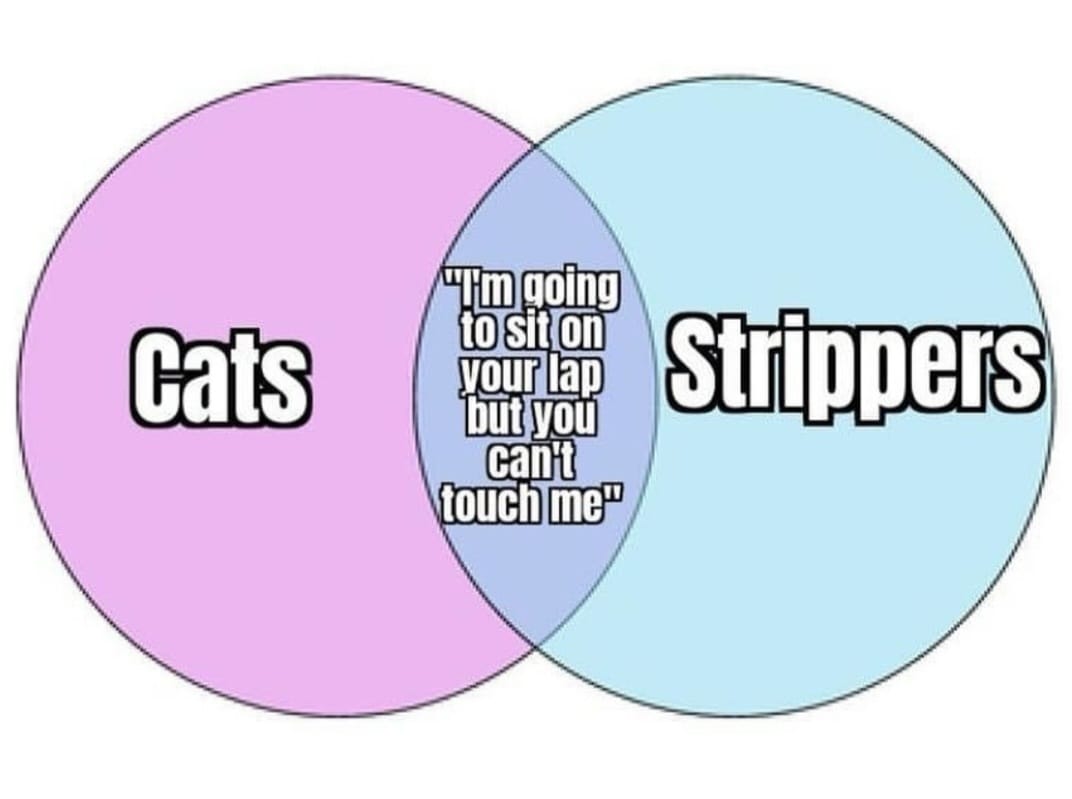I’ve been struggling with the opinion of the First Circuit court in —Ocean State Tactical, LLC v. State of Rhode Island, No. 23-1072 (1st Cir.). I know that it is a twisted opinion, attempting to keep as many abuses of our rights in place for the longest period of time possible.
Still, I want to understand their logic. This is not the same as agreeing with them, I need to understand what they are attempting to do and what they are saying.
The first thing that the First did was to assume that LCMs are “arms” within the scope of the Second Amendment
—id. at 8. This is plain nasty, evil crap for the circuit courts to do.
Bruen directs the inferior courts to follow Heller. The first step is to determine if the individuals’ conduct is within the scope of the Second Amendment. “Assuming” is not “determining”. This would be as bad as a court saying “We assume the party would win on the merits, but we find that they will lose on balance of equity, so there is no need to do the first prong of the Winter factors.”
I’m sure the lawyers who are reading this are saying, “Idiot, it happens all the time.” I am not a lawyer. I’m a computer geek. No matter how you slice it, it is a shitty thing to do. It is lazy and unprofessional. Everybody knows that we need the circuits to say whether LCMs are “arms” or not. As soon as they say they are not, then we can start the appeals to get that overturned.
Having stated that they are going to assume, without finding, they First then moves to answer the question, “Is HB 6614 [LCM ban] consistent with our history and tradition.”
Plaintiffs contend that because firearms capable of firing more than ten rounds without reloading “are nothing new” and have at times been unregulated, Rhode Island’s ban is at odds with tradition. To support this position, they point out that some multi-shot firearms existed in the late 1700s, and others were more common by the mid-to-late 1800s in the form of the Henry and Winchester rifles. But as plaintiffs concede, today’s semiautomatic weapons fitted with LCMs are “more accurate and capable of quickly firing more rounds” than their historical predecessors. And they are substantially more lethal.
—id.
This is a true statement that makes no difference. Having decided that this is an arms ban case, the question then becomes “are LCMs in common use for lawful purposes?”. If the answer is “yes”, then the case is over, in our favor.
But, of course, the First claims it does matter:
More importantly, we find in the record no direct precedent for the contemporary and growing societal concern that such weapons have become the preferred tool for murderous individuals intent on killing as many people as possible, as quickly as possible. This is unsurprising, given evidence that “the first known mass shooting resulting in ten or more deaths” did not occur in this country until 1949. Oregon Firearms Fed’n, Inc. v. Brown, 644 F. Supp. 3d 782, 803 (D. Or. 2022). Likewise, “[a]t the Founding, there was no comparable problem of gun violence at schools.”
—id. at 9
Taking the latter first, my rights are not dependent on the acts of others. Just because Maxine Waters gets in front of her people and the cameras and says, “Get in their face; bother people at every restaurant where you can find a Cabinet Member”, I don’t lose my First Amendment protected rights to free speech. No matter how much “hate speech” they use, no matter how much racist crap they spew, it does not allow them to abuse my rights.
But let’s look at the former. The First Found no direct precedent. That might be the case, but it is irrelevant.
While
the historical analogies here and in Heller are relatively simple to draw, other cases implicating unprecedented societal concerns or dramatic technological changes may require a more nuanced approach. The regulatory challenges posed by firearms today are not always the same as those that preoccupied the Founders in 1791 or the Reconstruction generation in 1868. Fortunately, the Founders created a Constitution—and a Second Amendment“intended to endure for ages to come, and consequently, to be adapted to the various crises of human affairs.”
McCulloch v. Maryland, 4 Wheat. 316, 415 (1819) (emphasis deleted). Although its meaning is fixed according to the understandings of those who ratified it, the Constitution can, and must, apply to circumstances beyond those the Founders specifically anticipated. See,
e.g., United States v. Jones, 565 U. S. 400, 404–405 (2012) (holding that installation of a tracking device was “a physical intrusion [that] would have been considered a ‘search’ within the meaning of the Fourth Amendment when it was adopted”).
—
New York State Rifle & Pistol Assn., Inc. V. Bruen, 142 S.Ct. 2111, 19 (U.S. 2022) slip opinion
The Bruen court has clearly stated that cases like Bruen and Heller are relatively simple, not requiring a nuanced approach.
What type of cases are Heller and Bruen? They are arms ban cases! Exactly what Ocean State is challenging. They are challenging an arms ban case.
The circuit courts like to pretend that mass shootings are a new societal concern. They are full of it. The Supreme Court was well aware of mass shootings.
April 16, 2007, 33 people were killed and 17 wounded on the grounds of Virginia Tech. The asshole doing the shooting was using a handgun. Heller was about a handgun ban. The Supreme Court considered mass shootings before they issued their opinion in Heller.
The Supreme Court had multiple cases before them seeking cert. that briefed them on the horrors of mass shootings and the horrors of “assault weapons”.
This is not a new issue. There is no excuse for a “nuanced approach” by the First Circuit.
Concern about the increasing frequency of LCM-aided mass shootings today prompted the Rhode Island legislature to pass HB 6614.6 And since the record contains no evidence that American society previously confronted — much less settled on a resolution of — this particular concern, we have no directly on-point tradition on which to rely in determining whether Rhode Island’s ban is consistent with our history and tradition.
—Opinion, No. 23-1072, slip op. at 10
Can you find a historical regulation banning murder? Yes. And it is a tradition, too. Can you find a historical regulation banning murder with guns? No. It is subsumed into murder. It is already banned. Can you find a historical regulation banning murder with guns with detachable magazines? No, you can not.
The lack of a “twin” to the modern regulation banning murder with a gun doesn’t invalidate the current ban. There is a history and tradition of banning murder.
The First makes a profound error here. They claim that because there is no match to the modern regulation, they are instructed by the Supreme Court to loosen the requirements for a match.
What the Supreme Court actually said was that if there is no match, then the modern regulation is unconstitutional.
The First then uses that “too specific to match” to lie by omission. there was no comparable problem with gun violence at schools
Maybe there was no “gun violence” but there was certainly violence.
On July 26, 1764, four Delaware (Lenape) Native Americans entered a settlers’ log schoolhouse in the Province of Pennsylvania and killed the schoolmaster, Enoch Brown, and ten students. One other student named Archie McCullough was wounded. The massacre is the first school shooting recorded in U.S. history. Historian Richard Middleton described the massacre as “one of the most notorious incidents” of Pontiac’s War.
—Wikipedia: Enoch Brown school massacre (Feb. 2024)
The number of armed attacks by Indians upon settlers is extensive.
So the First exhibited ignorance when they said school shootings were unknown in the founding era.
Having decided to ignore Bruen‘s statement of when the state can use looser criteria in matching past laws, the Court then decides to resurrected from the ashes good old interest balancing.
“Relevantly similar” is the language of the Supreme Court.
What did the Bruen Court say?
Much like we use history to determine which modern “arms” are protected by the Second Amendment, so too does history guide our consideration of modern regulations that were unimaginable at the founding. When confronting such present-day firearm regulations, this historical inquiry that courts must conduct will often involve reasoning by analogy—a commonplace task for any lawyer or judge. Like all analogical reasoning, determining whether a historical regulation is a proper analogue for a distinctly modern firearm regulation requires a determination of whether the two regulations are “relevantly similar.” C. Sunstein, On Analogical Reasoning, 106 Harv. L. Rev. 741, 773 (1993). And because “[e]verything is similar in infinite ways to everything else,” id., at 774, one needs “some metric enabling the analogizer to assess which similarities are important and which are not,” F. Schauer & B. Spellman, Analogy, Expertise, and Experience, 84 U. Chi. L. Rev. 249, 254 (2017). For instance, a green truck and a green hat are relevantly similar if one’s metric is “things that are green.” See ibid. They are not relevantly similar if the applicable metric is “things you can wear.”
—Bruen, 142 S.Ct. at 19–20
Note, my citation and theirs differ, yet the language is a match.
The Bruen court, in explaining how Heller works, says that regulations must match using a good metric.
we do think that Heller and McDonald point toward at least two metrics: how and why the regulations burden a law-abiding citizen’s right to armed self-defense.
—id. at 20
To rephrase, “how a regulation burdens a citizen’s right to keep and bear arms” and “why a regulation burdens a citizen’s right to keep and bear arms.”. That seems pretty simple.
The Supreme Court continues, whether modern and historical regulations impose a comparable burden on the right of armed self-defense and whether that burden is comparably justified
—id.
Here is where the First Circuit stakes their claim of comparing burdens.
This does not mean that courts may engage in independent means-end scrutiny under the guise of an analogical inquiry. Again, the Second Amendment is the “product of an interest balancing by the people,” not the evolving product of federal judges. Heller, 554 U. S., at 635 (emphasis altered). Analogical reasoning requires judges to apply faithfully the balance struck by the founding generation to modern circumstances, and contrary to the dissent’s assertion, there is nothing “[i]roni[c]” about that undertaking. Post, at 30. It is not an invitation to revise that balance through means-end scrutiny.
—id. n. 7
When the Supreme Court speaks of “burden on” they mean how the people were burdened by the regulation. Were they told how to store their arms? What arms they could possess? What arms they could carry? How they carried their arms?
These are the “how metric” of Heller as affirmed by Bruen.
To gauge how HB 6614 might burden the right of armed self-defense, we consider the extent to which LCMs are actually used by civilians in self-defense.
—Opinion, No. 23-1072, slip op. at 11 This is a profound misreading of Heller and Bruen. The “how” in question is “the modern regulation is banning an arm”.
The extent that magazines are used or not used has nothing to do with how a regulation burden’s a member of The People.
Given the lack of evidence that LCMs are used in self-defense, it reasonably follows that banning them imposes no meaningful burden on the ability of Rhode Island’s residents to defend themselves. True, one could imagine Hollywood-inspired scenarios in which a homeowner would need to fend off a platoon of well-armed assailants without having to swap out magazines. But we read Bruen as requiring us to ascertain how a regulation actually burdens the right of armed self-defense, not how it might be imagined to impose such a burden. And even if we were to consider imagined burdens in our analysis, we would certainly accord them little weight. Otherwise, the assessment of how a regulation burdens the right of armed self-defense would always find a substantial burden.
—id.
Here is the dirty little secret of civil rights, the amount of burden is not at issue.
It’s no real burden to stand over in that place to speak. It’s no real burden to get government permission to stand on your soapbox and talk. It’s no real burden to tax printing ink.
That might be true. That it is “no real burden”. That doesn’t mean that there is no burden.
If there is a burden, the courts must find that the how of the burden has a historical match.
And yes, First Circuit, any burden on the right to armed self-defense is a substantial burden.
To attempt to save themselves, they then use the NFA as a “historical” match in weapons ban. How did the NFA burden the right of armed self-defense with regulated arms? You had to pay a substantial tax. Was it a ban? No! There are no federal bans on sawed of shotguns. There are no bans on short barreled rifles. There are no bans on machine guns.
All such bans are at the state level, which have not been directly challenged — yet.
So the “how” doesn’t match. Never mind that the regulation comes much too late in history.
They also bring up the tired old and even the severe restrictions placed on Bowie knives by forty-nine states
—id. at 13 Except those historical “severe restrictions” were on carrying Bowie knives. Not a ban.
The rest of the opinion is filled with obfuscations. They say that the why for the NFA is a match for their magazine ban. They are correct. It is a match. In 1934. Nowhere near 1791. It can be discounted, out of hand.
They then go back to the Bowie knife argument. Most of those regulations came after the founding era. The Court claims the earliest was 1830. That is barely inside the range of “founding era.”
The Heller court was aware of the Bowie knife regulations. They didn’t find them enough to justify a ban on arms for self-defense.
I think I have my head around this. I’m going to go swallow a couple of Tylenol, maybe my head will stop hurting then.
—
District of Columbia v. Heller, 467 U.S. 837 (2008)—
Mcdonald V. Chicago, 177 L. Ed. 2d 894 (2010)—
Minneapolis Star & Tribune Co. V. Minnesota Commissioner of Revenue, 75 L. Ed. 2d 295 (1983)—
Nken v. Holder, 556 U.S. 418 (2009)—
Staples V. United States, 128 L. Ed. 2d 608 (1994)—
Caetano V. Massachusetts, 194 L. Ed. 2d 99 (2016)—
Winter V. Natural Resources Defense Council, Inc., 172 L. Ed. 2d 249 (2008)—
Cass R. Sunstein, On Analogical Reasoning, 106 Harvard Law Review 741 (Jan. 1993)
Bibliography
Staples V. United States, 128 L. Ed. 2d 608 (1994)
Nken v. Holder, 556 U.S. 418 (2009)
Mcdonald V. Chicago, 177 L. Ed. 2d 894 (2010)
Caetano V. Massachusetts, 194 L. Ed. 2d 99 (2016)
Cass R. Sunstein,
On Analogical Reasoning, 106 Harvard Law Review 741 (Jan. 1993)
Wikipedia: Enoch Brown school massacre (Feb. 2024)
Like this:
Like Loading...







